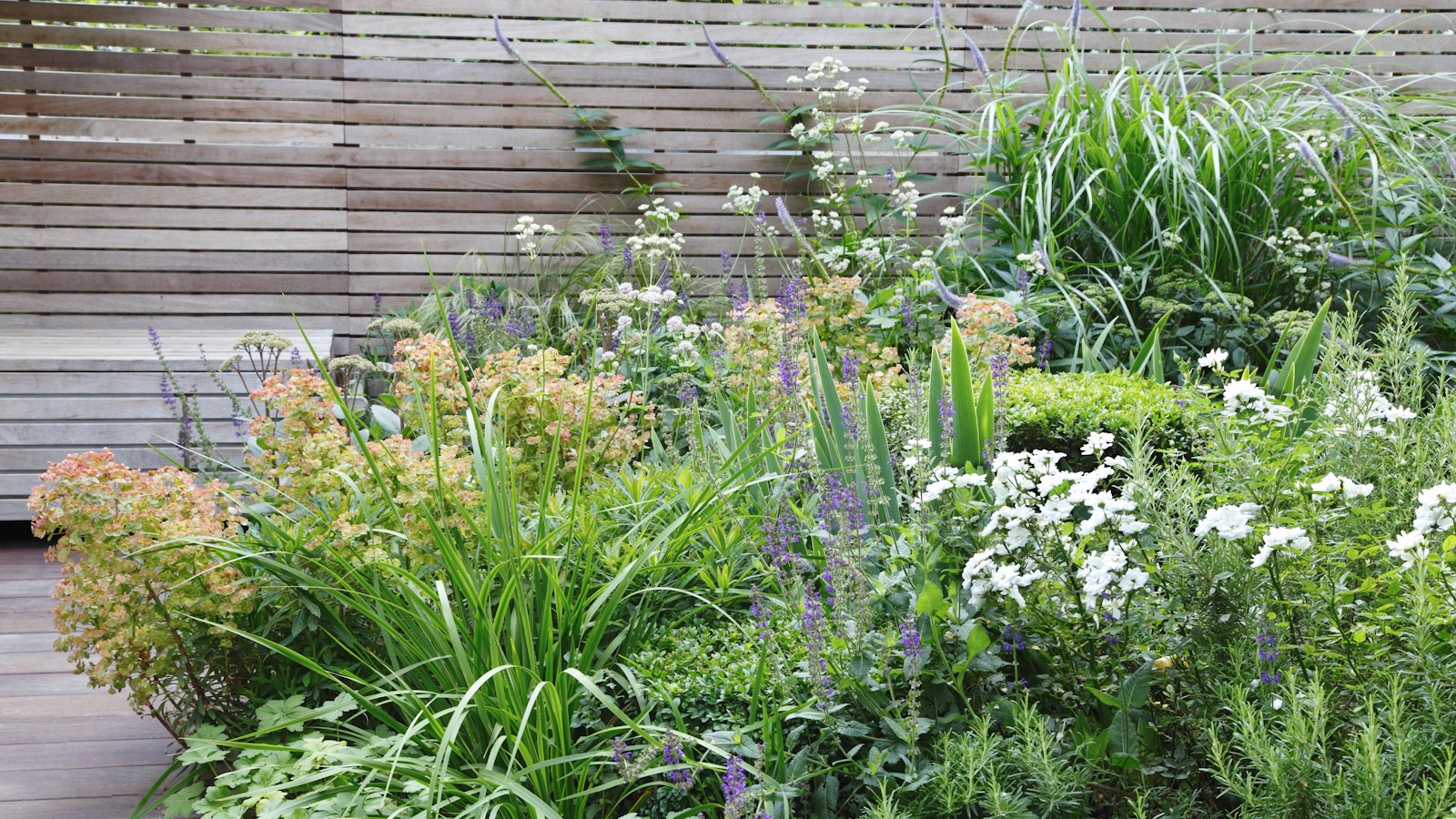
I’ve moved around a lot, and so have gardened in all sorts of settings. From a small, sun-trapped balcony in east London to a sprawling patch of countryside in the Chianti hills. And through all of that, I’ve learned a few things. Mostly from trial, error and the occasional emotional overreaction to a previously unknown flower.
I’ve come to understand what’s genuinely tough, what grows where, and which species are simply more trouble than they’re worth. And I confess, when it comes to planting choices, I’m entirely led by beauty. I want plants that make me feel something. I want plants that deliver moments of joy, calm, drama, and energy.
Of course, there’s always room to add, tinker and refine your backyard ideas. But if I were to begin again, in an imaginary space, these are the seven plants I would add first, including a mix of trees, shrubs, perennials and annuals. You might agree with these picks, be inspired by them, or ignore them entirely. The choice is up to you. Either way, indulge me while I declare my affection for each.
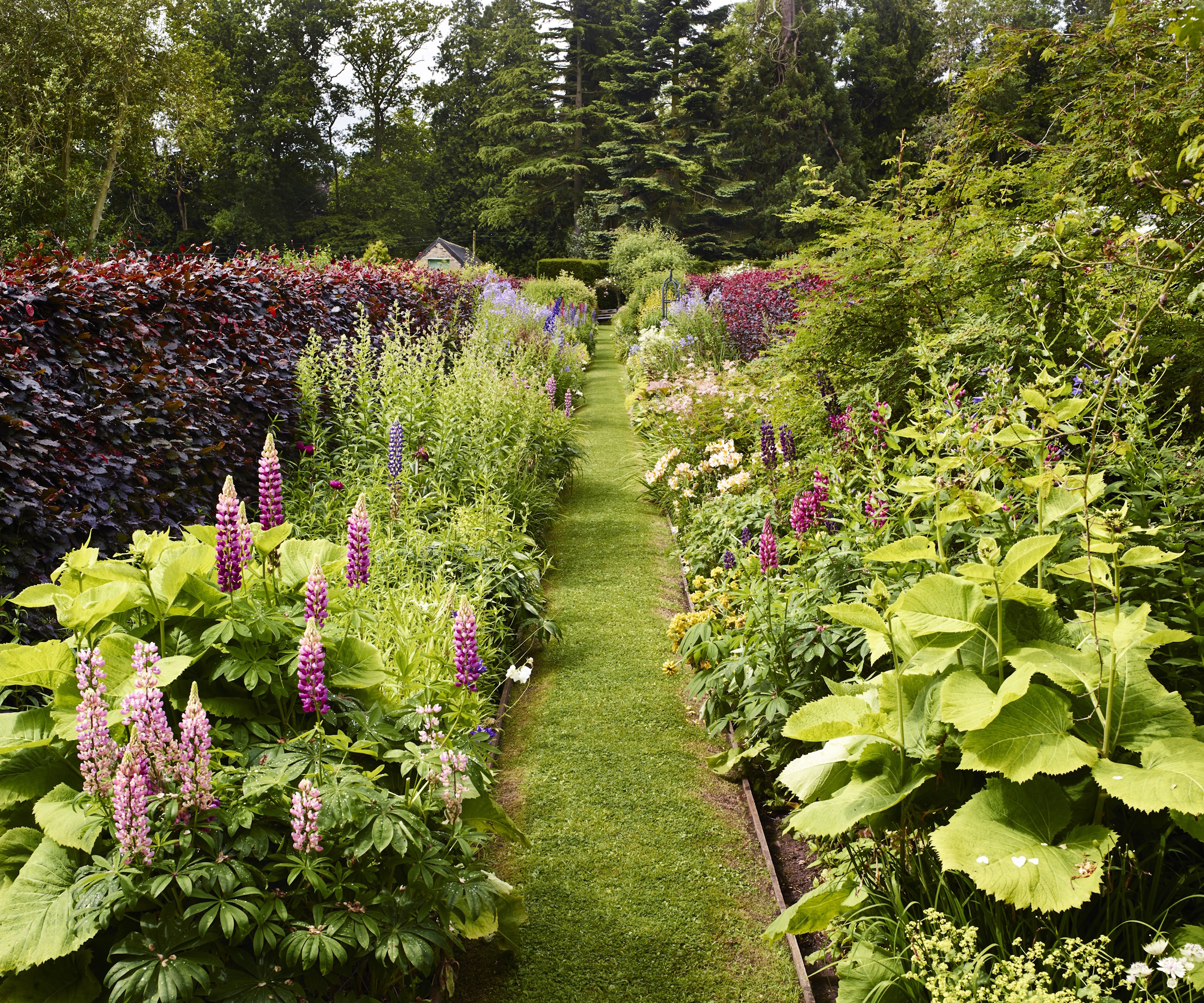
7 best plants to start a garden from scratch
The following seven plants to start a garden are, in my experience, tough, versatile and reliably brilliant, so they are ideal if you are planning a redesign in the coming year.
These trees, flowering shrubs and perennials have proven themselves to me time and again in different climates and soils, sun or shade, and still manage to deliver color, structure and joy.
1. Crab apple
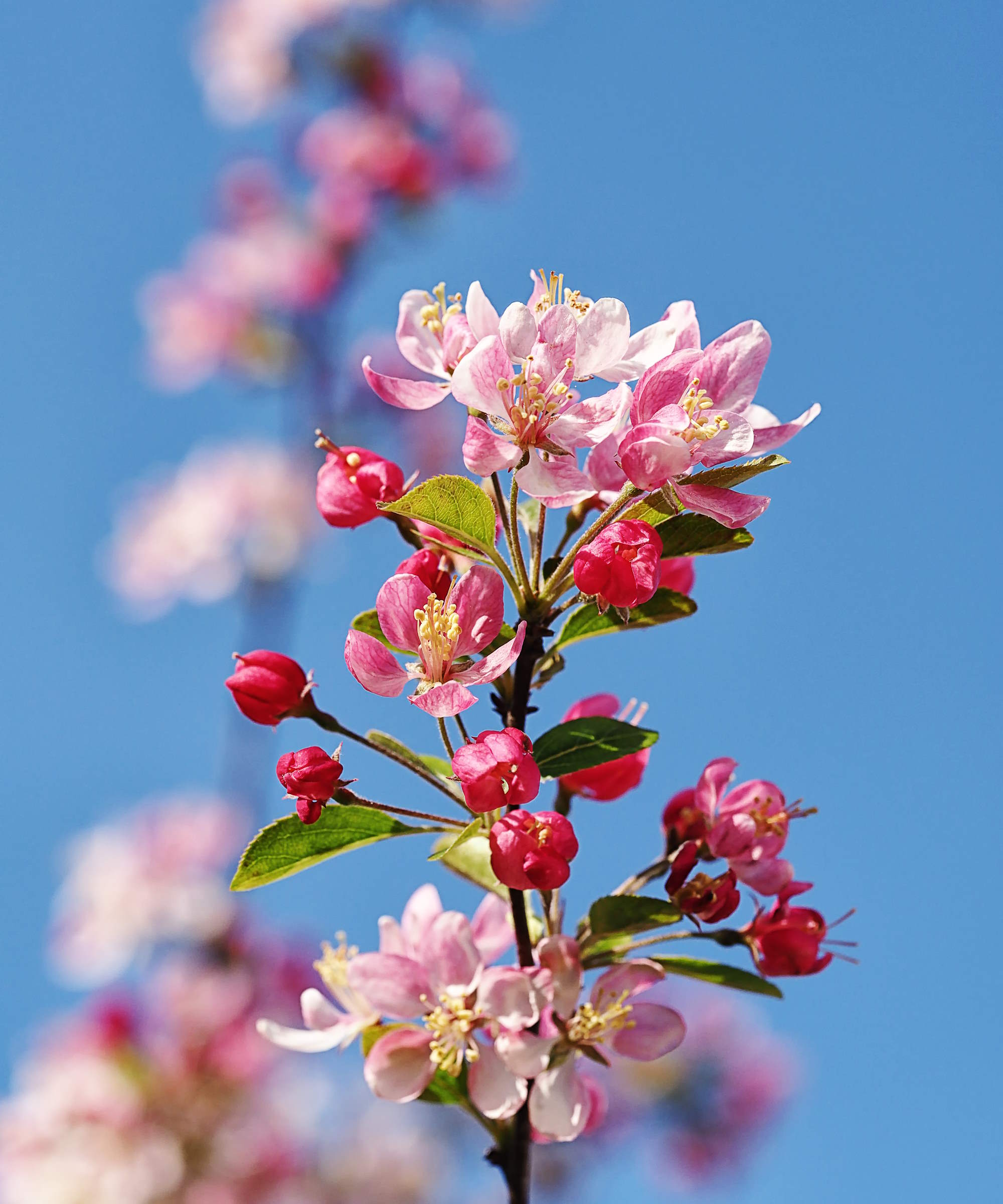
Crab apple trees are some of the best trees for spring blossom, and, in my opinion, cannot be beaten during April. On seeing those white or pink flowers, you know that warmer weather is on the way.
When working as a horticulturist in Monmouthsire, in South Wales, we had five established pleached crap apple trees planted in a line near to the front door.
Pruning was essential to keep them perfectly neat and flat, but it was worth it. From April through October, songbirds and pollinators could not stay away.
In terms of how to plant crab apple trees, they can be grown down to zone 4, ideally in a sunny spot with moist but well-draining soil.
These low-maintenance trees come in a variety of shapes and styles, and can work just as well when used as a hedge, as a statement feature in the border, or even used as a container plant in a pot.
So, if you are starting a yard from scratch, crap apple trees, to me, offer structure, good seasonality, and unrivalled wildlife credentials. Low effort for high impact, and who wouldn't want that?
In terms of varieties, Malus ‘Evereste’ is a classic option, although Malus ‘Crimson Cascade’ makes an ideal focal point with its deep maroon blooms.
Crab apple tree starter plants can be ordered via Amazon. Be sure to give your new trees a good, deep watering on arrival, and get them in the ground as soon as possible.
2. Oak leaf hydrangea
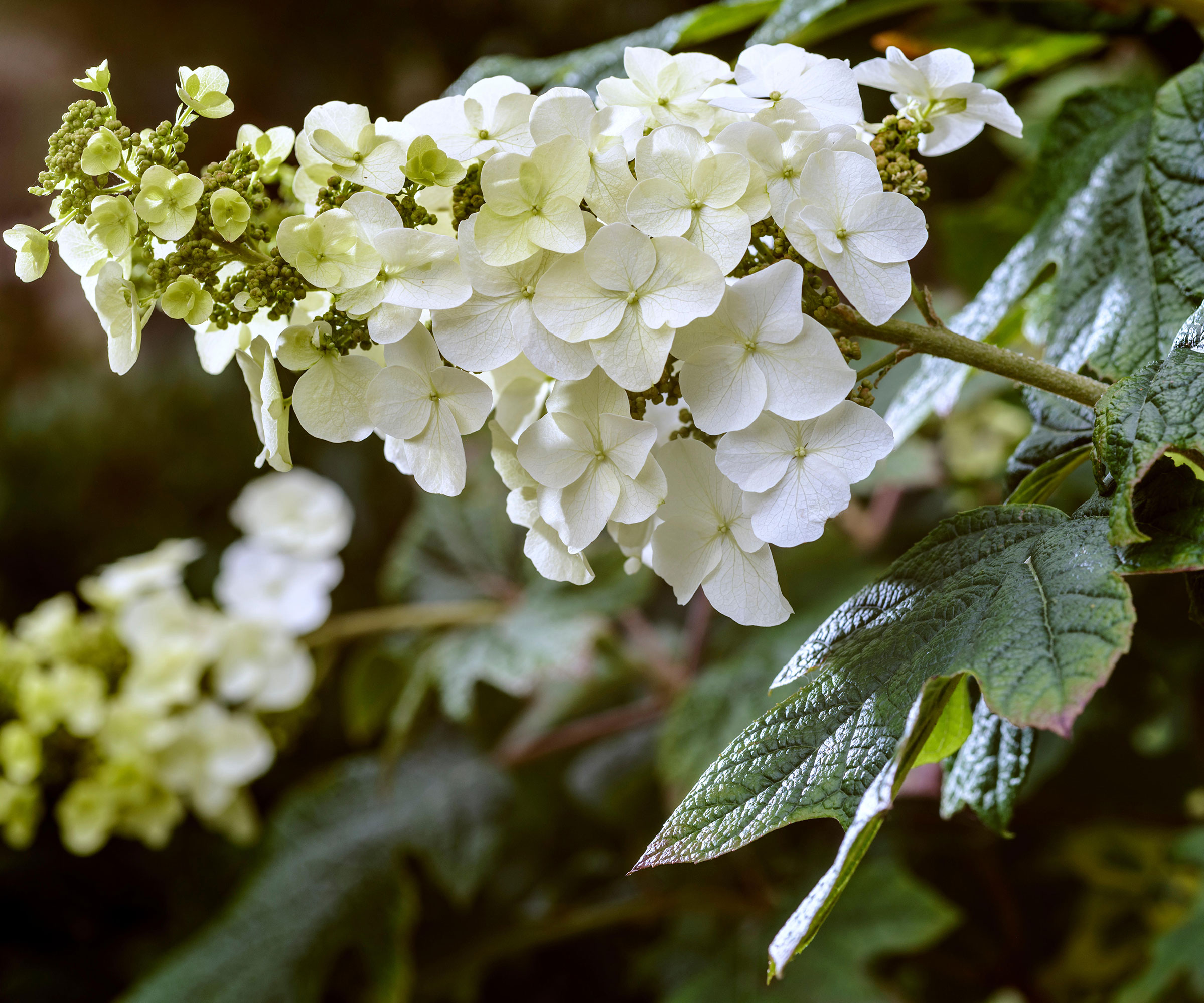
I grew oakleaf hydrangeas, or Hydrangea quercifolia, en masse in a part-shaded woodland bed when working on a private estate near Pienza in Tuscany.
Under a gnarly old mulberry tree, no less, and I was genuinely amazed at how little they needed. Little attention (and no fertilizer) required.
Native to woodland habitats across North America, they can be found growing from North Carolina to Tennessee, Florida to Louisiana. They do best from zone 5 to zone 10, ideally in partial shade with moist soil.
Live oakleaf hydrangea plants can be ordered via Walmart.
In my opinion, oakleaf hydrangeas are one of the best hydrangea varieties you can grow, not least for the conical springtime white flowers, which tend to fade into pinkish bronze tones in summer.
And, in fall, the oak-like leaves turn the most astonishing mix of copper, red and rust. Really, quite wonderful.
They are one of those shrubs, I think, that just keep delivering every year after planting, making them a sensible option for a new garden.
3. Spurge
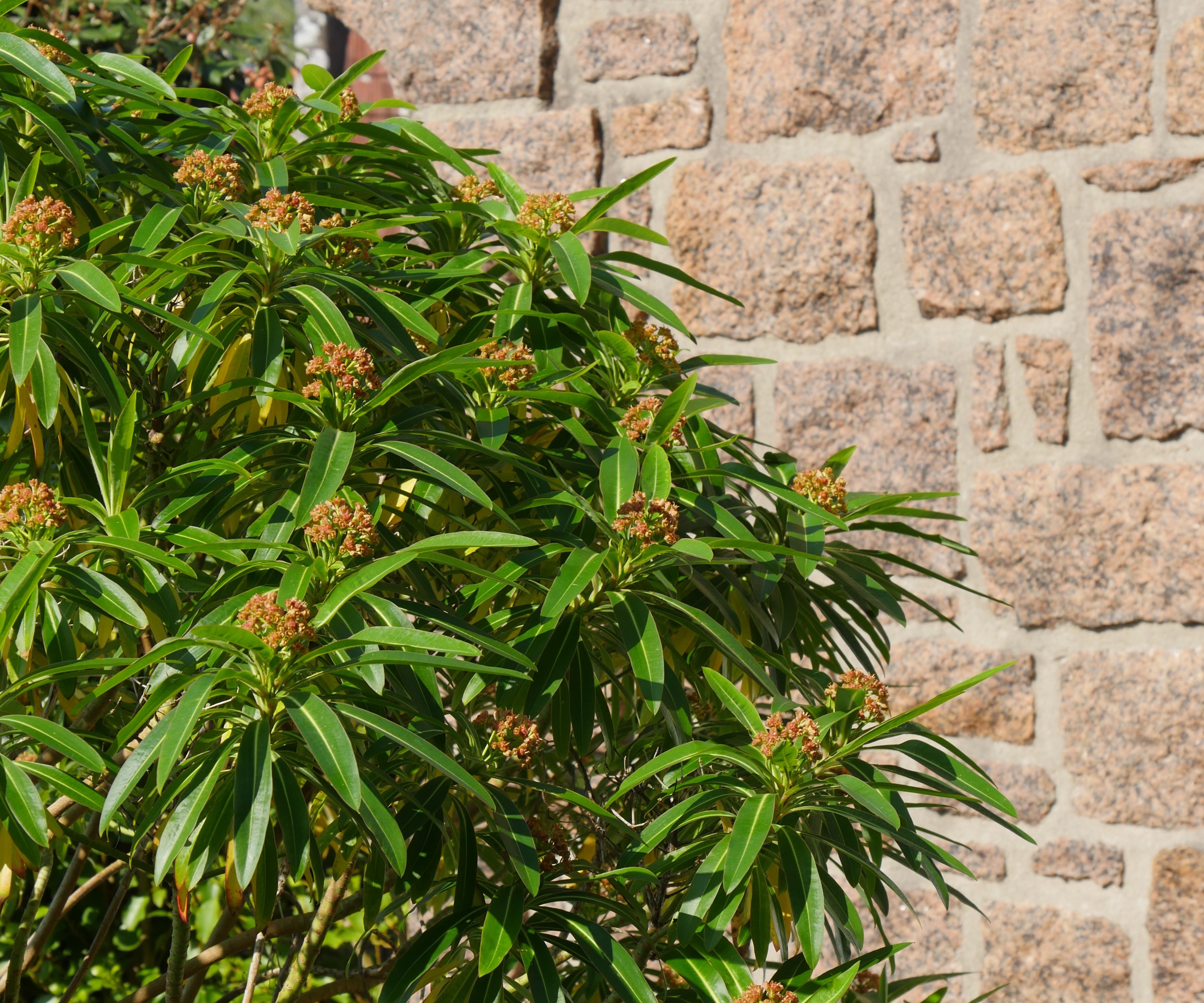
At the Garden Museum in London, just off the main path, tucked around the corner of an old tomb (really), we grew Euphorbia mellifera, otherwise known as the Canary or honey spurge.
As is the case for most spurges, this species was evergreen, retaining most of its foliage in a neat dome shape for fall and winter, so it is a useful shrub to provide structure in new gardens.
Come April, Euphorbia mellifera erupts with clusters of burnt-toffee flower heads that smell unmistakably of honey. Once inhaled, you will agree that this is surely one of the best fragrant shrubs.
This species does best in warmer regions, from zone 9 plus, but in a sheltered nook, as it was grown at the Garden Museum, you can provide adequate protection to keep it happy in cooler regions, too.
In terms of light and soil, most spurges are flowering shrubs for full sun, thriving with six or so hours of direct sun each day. They can be grown in nutrient-depleted, poor soils without much attention required.
For a hardier option that can be grown down to zone 6, try lime-green flowering 'Martin's Spurge', or Euphorbia x martinii, live plants available from Nature Hills.
Word of warning: these are poisonous plants, and the sap is toxic, so gloves are non-negotiable. I’ve had the misfortune of a nasty rash on my arms more than once when pruning spurges.
They bleed a milky white sap when cut or damaged, so it is best to wear a pair of long-handled gardening gloves, available from Walmart, and keep these plants away from paths or play areas.
4. Persicaria
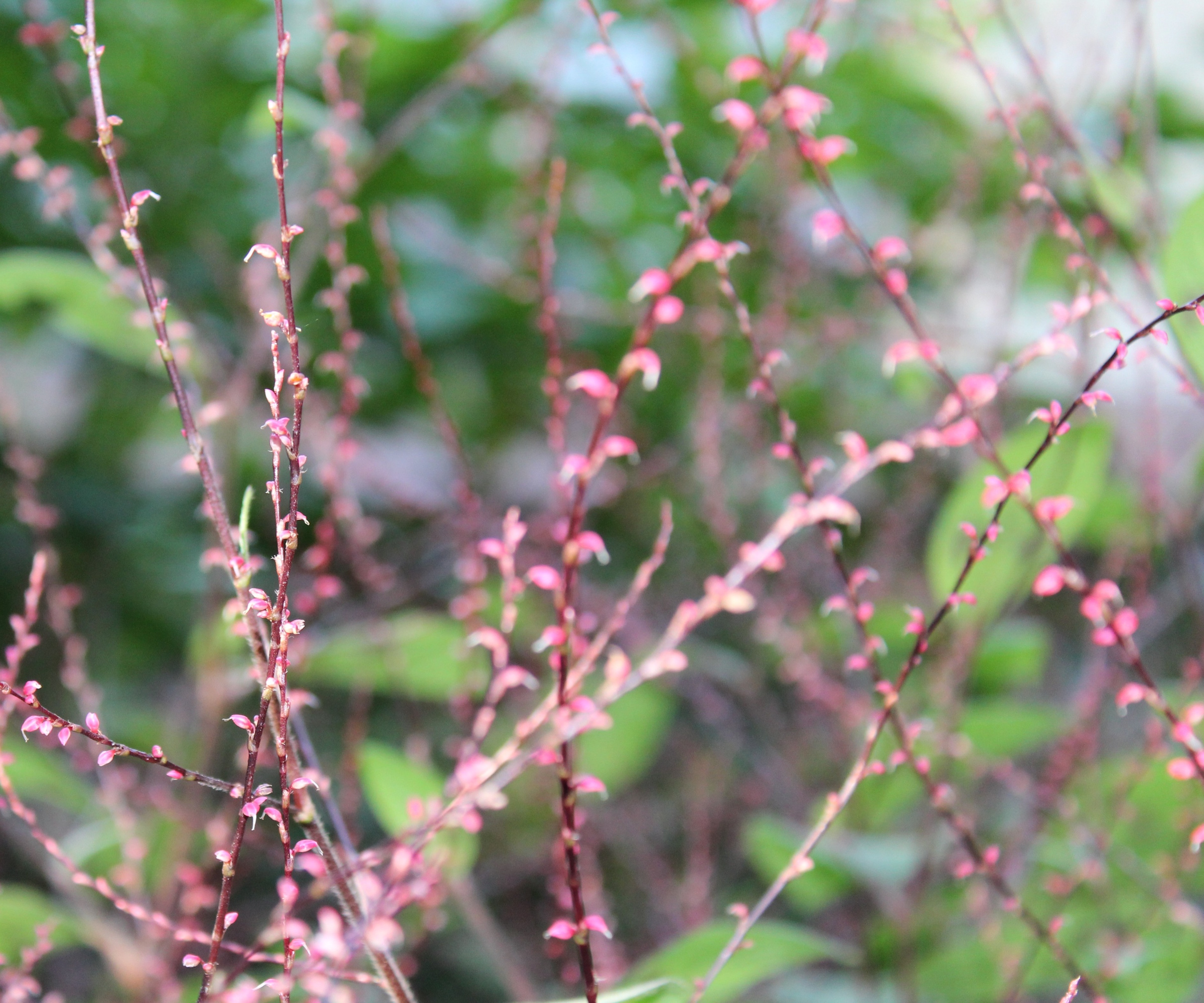
I’ve grown a fair few persicarias in my time, from cottage garden borders in London to wilder, looser meadows in the English countryside.
And, if you’re after one of the longest-flowering perennials, with good foliage and blooms that pollinators love, you really can’t go far wrong.
Especially, I think, with jumpseed, a North American native that is one of my go-to perennial plant suggestions. One jumpseed variety I love is Persicaria virginiana var. filiformis, which has dark V-shaped markings on lime-green leaves.
Hardy down to zone 4, these are perennials that thrive on neglect, with no need to feed or water once they are established. They can also be grown in sun or shade, and take to almost any soil.
Most persicarias benefit from a good mid-season chop back, which in my experience encourages a second (sometimes even a third) flush of color. And, in a good year, they can keep flowering through to fall.
The only caveat? Many species are prolific spreaders and self-seeders, and outside of their native range, can sometimes be considered invasive plants.
This can be controlled with annual lifting and dividing, but always check what should and should not be planted by consulting the website of your local government office.
For a species with pale pink blooms and unique foliage markings, try this Vietnamese coriander, or Persicaria odorata, with live plants available from Amazon.
5. Aster
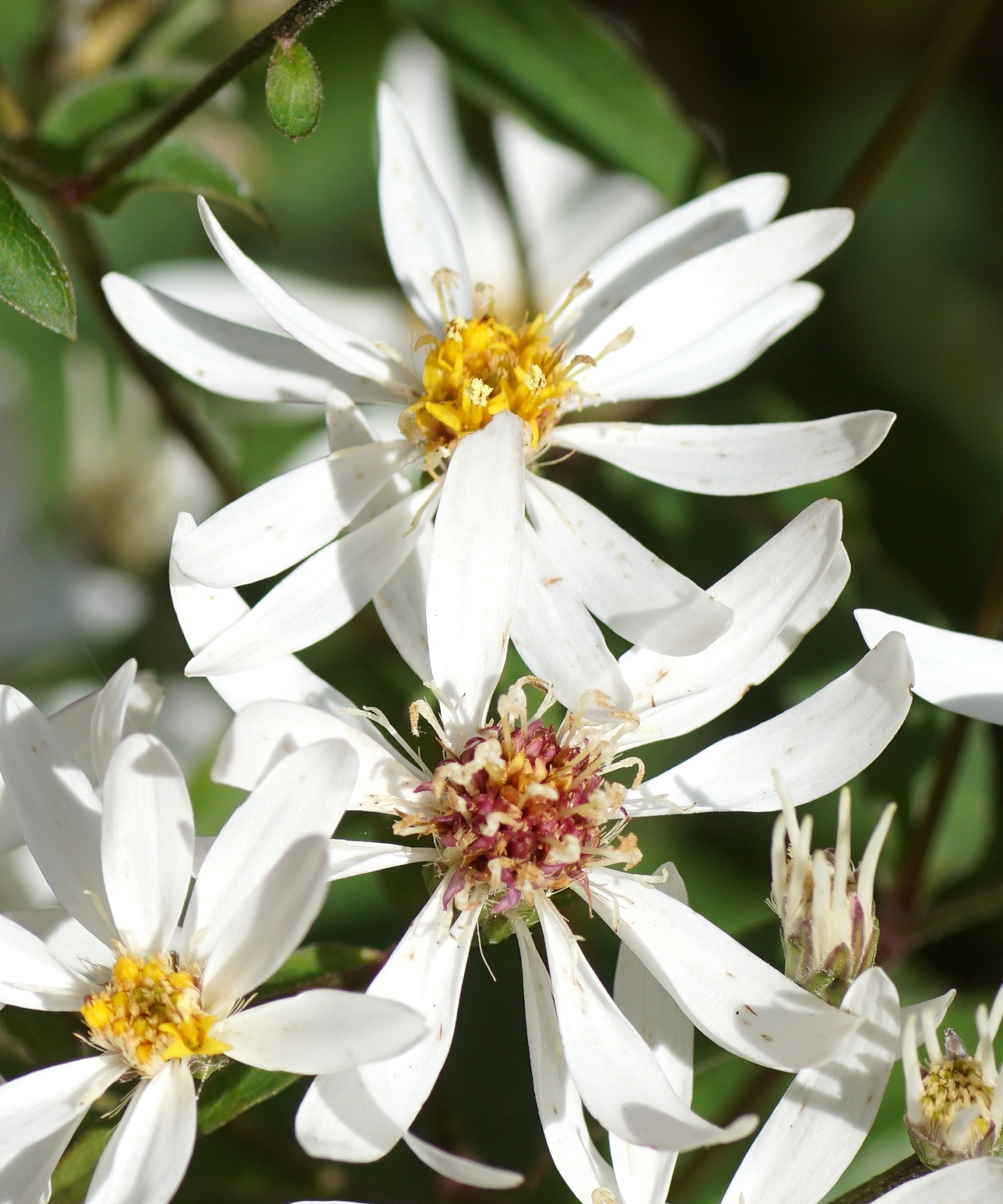
I’ve always had a soft spot for asters. Learning how to grow and care for asters is pretty simple, and, with long-lasting daisy flowers, what is not to love?
For a purple variety that will flower right up until the first frost, try growing aster 'Sapphire', with live plants available from Nature Hills.
There are many different aster varieties, but one woodland plant that I have grown before is Eurybia divaricata, or the white wood aster, which is a quiet sort of performer.
White wood aster live plants can be ordered at Amazon now.
Hardy down to zone 3, this species thrives in deep shade with little effort required, and then, just as everything else is beginning to fade, this aster kicks into action, with white blooms that often last from midsummer until mid-fall.
One thing to know with taller aster varieties is that the stems can flop, especially after a good fall downpour in October.
So, a little discreet staking early in the season sorts that out. Something made of willow or hazel should do the trick, nothing too fussy or formal.
I’ve never fed my asters, and they’ve never complained. Just a bit of mulching and dividing every couple of years. Low-maintenance, high-impact and a very elegant late bloomer.
6. Evergreen clematis
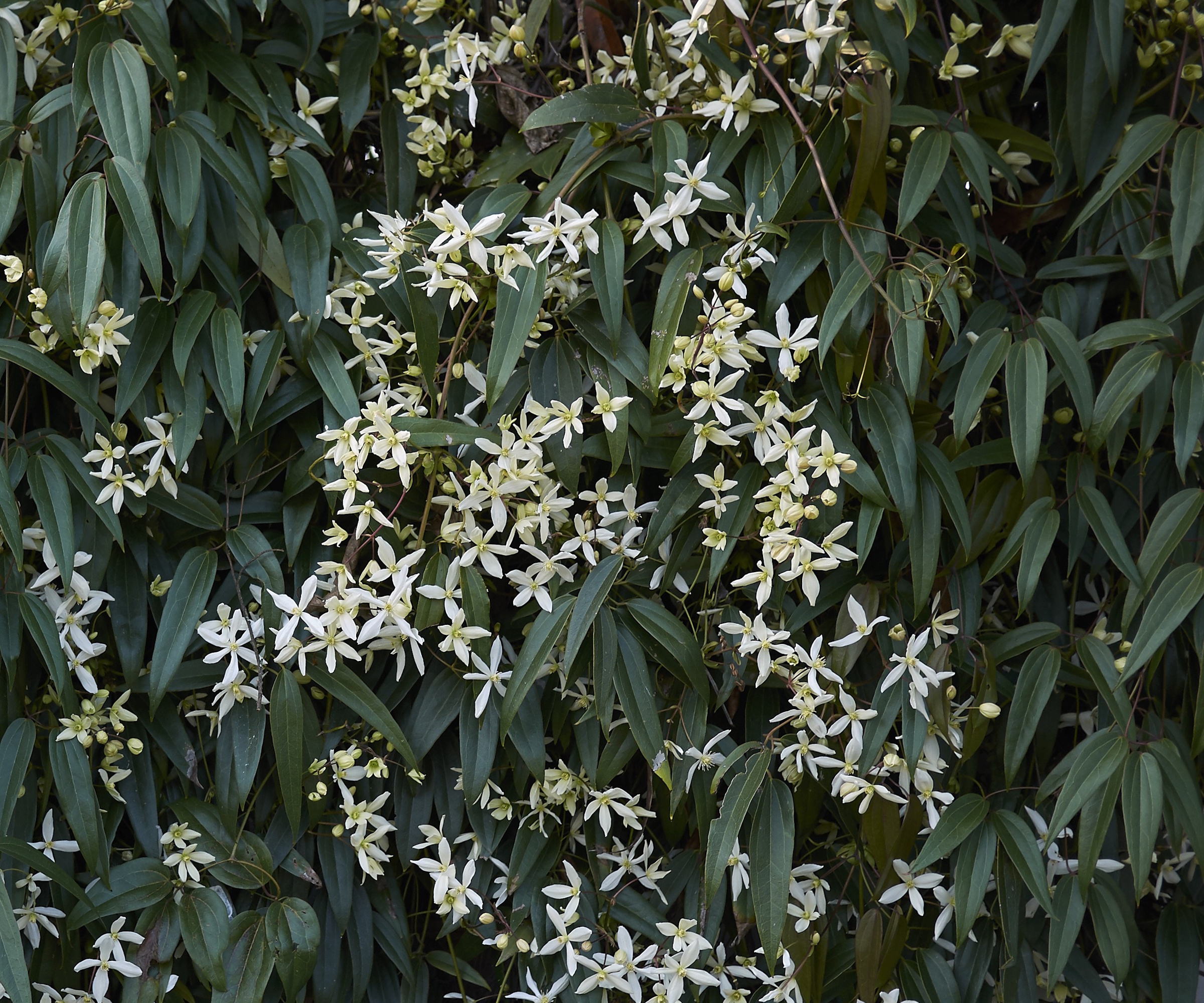
One of the best climbers to grow in pots or borders that can hide bare walls and fences is the evergreen clematis, or Clematis armandii.
This evergreen climber is that rare combination of useful and beautiful. The waxy, oval leaves add year-round texture, even in winter, and, in early spring, somewhere around April, it produces wonderful creamy white flowers that are hard to top.
In terms of how to grow evergreen clematis, I have found it does best in a sheltered spot, thriving from zone 6 to zone 9 in a sunny position.
While slow to establish, eventually this vine can reach up to 20 feet in length. But, in my experience, a little patience is needed for the first year or two whilst it settles.
I have grown Clematis armandii in pots on patios and along fences in city gardens, and the trick is to regularly tie in the stems to get it to grow where you want it. Other than that, it is an unfussy climbing plant that thrives on neglect.
For a native clematis option, try this Clematis virginiana, with live plants available from Walmart.
7. Cosmos
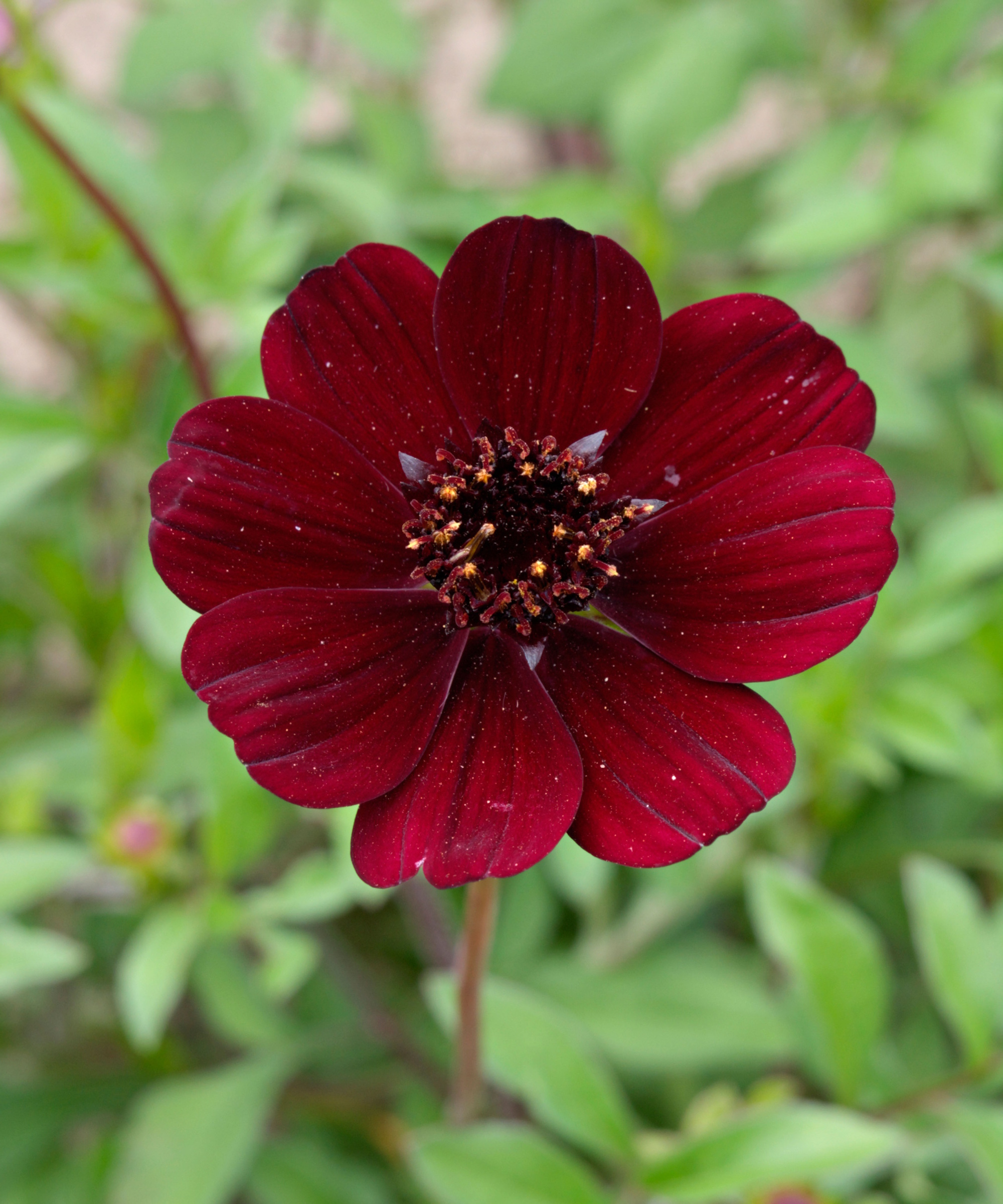
Cosmos annuals were one of the first flowers I ever grew, and I’ve loved them ever since.
And, in a new garden, growing any fast-growing flowering annuals (I could have also picked dahlias, zinnias, snapdragons, too) is essential, and can help to inject color and impact in a short amount of time.
I have grown many of the best types of cosmos, including ‘Apricot Lemonade’, which has peachy, salmon hues that I once became mildly obsessed with. And, they just kept going. Flowering through rain and wind and neglect, right through to mid-fall.
'Apricot lemonade' cosmos seeds can be ordered via Amazon.
The trick, when learning how to grow cosmos, is to keep snipping. Deadheading is crucial, and every few days, snip some stems for a vase. The more you cut, the more they give. Cosmos, and all annuals really, are generous plants.
One perennial option is ‘Chocolate Cosmos’, which can be planted down to zone 9, and is a good species if you are looking for a bit of drama, the crimson blooms working well especially against white asters or blush persicarias.
You can also grow cosmos in pots, too, which looks particularly colorful and impressive on a patio. Try this dark fibrestone Orren Ellis pot, available from Wayfair, which is stylish but also practical and lightweight.
FAQs
What bulbs are good investments for a new garden?
Planting bulbs is a sensible idea for any gardener, particularly so if you are starting in a new yard. I would suggest adding some tulips and daffodils that are naturalizing, meaning they will spread and return year after year, without any maintenance required.
Try growing species tulips, like Tulipa sylvestris, which is hardy down to zone 5, producing drooping golden-yellow blooms. In addition, the white-flowering Narcissus poeticus, or the pheasant's eye daffodil, looks great when planted through a meadow or grassed bank.
And, in a new garden, you can always rely on a few weeds to add greenery and blooms to borders and lawns.
Before reaching for your long-handled weeder, pause for a moment, and consider rethinking weeds, and whether or not you can leave that dandelion in the lawn or those clumps of clover growing in a crack along the path. Not only will they add a splash of color, but pollinators will be happy, too.
Shop garden accessories
These clay planters, from Hokku Designs, will add a touch of modern design to your patio, ideal for growing cosmos, dahlias or zinnias.







